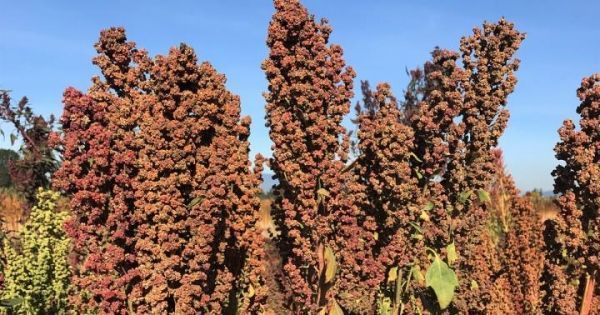Quinoa is a healthy food many know and love. As its popularity grows, more farmers are interested in planting it. However, the plant doesn’t do well in high temperatures, so plant breeders are trying to help.
Many of the current methods for seeing if a quinoa plant is heat tolerant are time-consuming and expensive. Researchers, led by professor Kevin Murphy at Washington State University, have been looking into more efficient methods for determining heat tolerance in quinoa.
“Temperatures above 95 °F often result in lower seed yield,” Murphy explains. “So, the goal of this study was to test new, efficient methods in the field. This can help us find heat-tolerant plant types in our breeding program and incorporate those genetics in new varieties.”
To conduct the research, hand-held devices are placed near the plant to measure the light they absorb and reflect. For example, plants may reflect near infrared light while absorbing red light.
Read more at American Society of Agronomy
Image: This is an advanced quinoa breeding line grown in Mount Vernon, WA. (Credit: Kevin Murphy)


